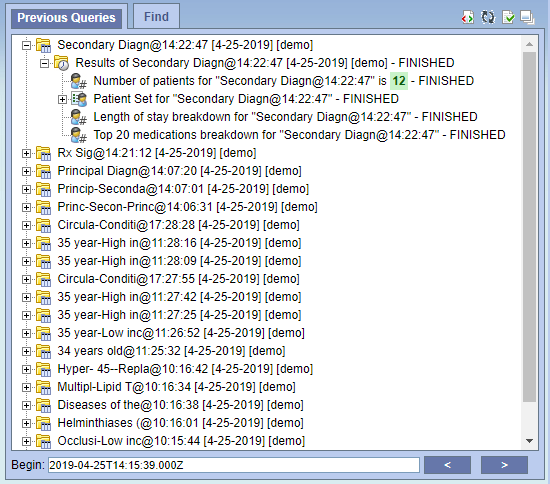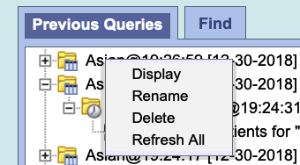Page History
Previously-run queries and their results (status, patient information) are displayed in and searched from When a query has run, it is stored in the 'Previous Queries' component. Previous queries are re-usable by dragging them into groups panel. A previous query can be reused by dragging it into the 'Query Name' box or into a group in the 'Query Tool' or by saving them into the 'Workplace'. panel.
The 'Previous Queries' and 'Find' tabs provide ways to identify an interesting previous query for reuse.panel contains two tabs:
- 'Previous Queries' tab: Shows previous queries by queries by descending order of time. The most recently run queries are displayed by default.
- 'Find' tab: Provides an interface to search for a previous query query.



